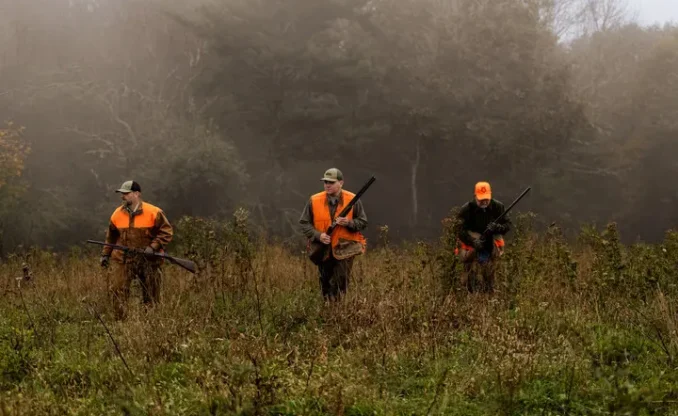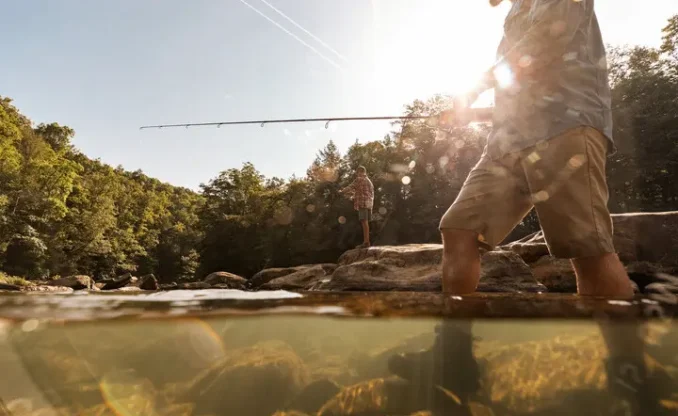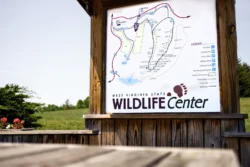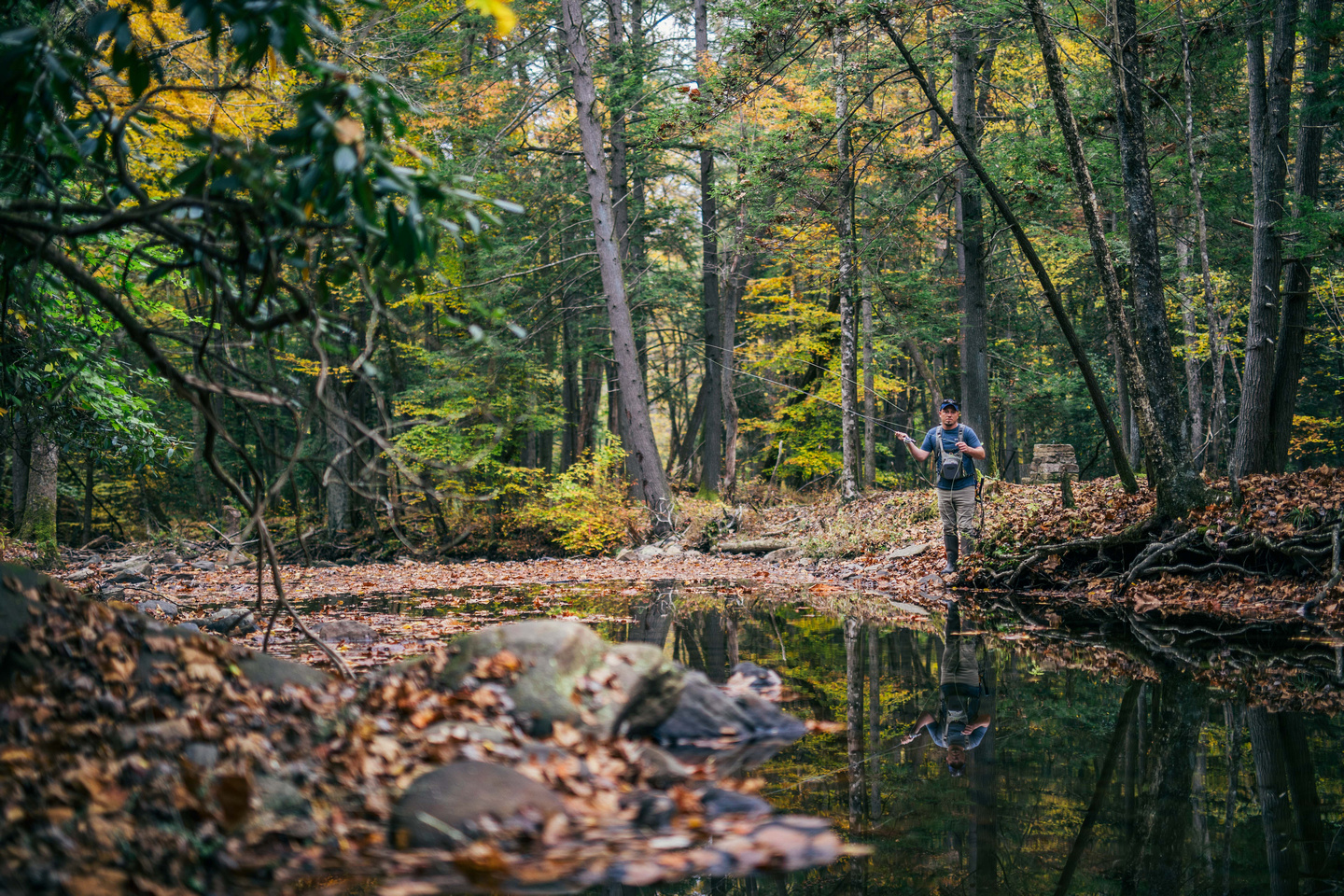The West Virginia Division of Natural Resources maintains records for the largest fish of each game species by length and weight taken by hook and line within West Virginia waters. If you believe you have you caught a potential state record fish, please contact your WVDNR district fishery biologist to authenticate the species, length and weight of your catch. Once a WVDNR fisheries biologist has verified your catch, fill out and submit a State Record Fish Reporting Form to the following address:
Wildlife Resources Section
West Virginia Division of Natural Resources
112 California Avenue
Charleston, WV 25305
West Virginia State Record Fish
| Species | Year | Length (Inches) | Weight (Pounds) | Location | Angler |
|---|---|---|---|---|---|
| Largemouth Bass | 2025 | 26.26 | 9.85 | Pond (Harrison County) | Seth Spry |
| 1994 | 24.80 | 12.28 | Pond (Grant County) | David W. Heeter | |
| Smallmouth Bass | 1976 | 25.50 | 7.50 | New River | Franklin J. Elliot |
| 1971 | 24.25 | 9.75 | South Branch | David Lindsay | |
| Rock Bass | 1964 | 13.80 | 1.75 | Big Sandy Creek | Warren Ryan |
| Spotted Bass | 2000 | 19.00 | 4.77 | R.D. Bailey Lake | Kevin Dameron |
| 1988 | 19.00 | 3.82 | R.D. Bailey Lake | Leonard Blankenship | |
| Striped Bass | 2010 | 47.16 | 45.70 | Bluestone Lake | James Brooks |
| Hybrid Striped Bass | 2000 | 32.10 | 14.00 | Kanawha River | Frankie Harris |
| 1985 | 31.50 | 16.75 | Kanawha River | Robert Honaker | |
| White Bass | 1985 | 20.00 | 4.56 | New River | Louis Puskas |
| Bluegill/Hybrid Bluegill | 1986 | 11.70 | 2.75 | Pond (Randolph County) | Mark Allen Lewis |
| 1964 | 13.75 | 2.25 | Pond (Fayette County) | Dennis Criss | |
| Redbreast Sunfish | 2024 | 9.29 | 0.57 | New Creek Lake | Zach Adkins |
| Redear Sunfish | 2024 | 12.00 | 1.75 | Plum Orchard Lake | John Plott |
| 2025 | 12.44 | 1.60 | Plum Orchard Lake | John Plott | |
| Pumpkinseed Sunfish | Be the First! (minimum of 9 inches) | ||||
| Bowfin | 1994 | 32.25 | 7.54 | Pond (Berkeley County) | Donald E. Newcomb III |
| 2024 | 30.20 | 10.60 | Ohio River | Lauren Noble | |
| Buffalo | 1976 | 41.00 | 38.00 | Little Kanawha River | Hobert Null |
| Common Carp | 1998 | 39.30 | 47.00 | Farm Pond (Preston County) | Gary Johnson |
| 2022 | 41.20 | 45.20 | Summersville Lake | Ayden Minick | |
| Grass Carp | 2005 | 50.75 | 71.69 | Warden Lake | William R. Taucher |
| 2020 | 54.75 | 67.40 | Warden Lake (Hardy County) | John Miller | |
| Blue Catfish | 2025 | 51.49 | 66.30 | Kanawha River | Justin Connor |
| 2023 | 50.51 | 69.45 | Ohio River | Michael John Drake | |
| Bullhead Catfish | 1977 | 22.75 | 6.10 | Tygart Lake Headwaters | Gary R. Freeman |
| Channel Catfish | 2024 | 43.51 | 46.70 | Pond (Wayne County) | John Tyler Rutherford |
| Flathead Catfish | 1956 | 52.00 | 70.00 | Little Kanawha River | L.L. McClung |
| Chain Pickerel | 2001 | 27.75 | 6.19 | Tuckahoe Lake | Steven Demma |
| 2019 | 27.87 | 4.00 | Upper Deckers Lake | Matt Born | |
| White Crappie | 1971 | 19.75 | 4.05 | Meathouse Fork | Leonard Edgell |
| Black Crappie | 2025 | 17.70 | 3.60 | East Lynn Lake | Jerry Porter |
| 2024 | 17.76 | 3.15 | Woodrum Lake | Dwight Priestly | |
| Eel | 1983 | 44.25 | 6.27 | Elk River | Steve Woods |
| 1977 | 44.00 | 7.25 | Bunker Hill Quarry | Arlie R. Ruble | |
| Fallfish | 1970 | 21.25 | 3.50 | North Fork of South Branch | James Blackwell |
| Freshwater Drum | 2021 | 35.59 | 27.88 | Kanawha River | John A. Gibson |
| 1954 | 37.00 | 25.00 | Little Kanawha River | Bill Dawkins | |
| Longnose Gar | 2023 | 53.62 | 15.00 | Ohio River | Rich Chapman |
| 1993 | 50.50 | 19.08 | Kanawha River | Michael Shan Casey | |
| Goldeye/Mooneye | 1983 | 18.50 | 3.00 | Ohio River | Delbert McWilliams |
| Muskellunge | 2022 | 55.0625 | 51.00 | Little Kanawha River | Lucas King |
| Northern Pike | 1989 | 42.60 | 22.06 | Dog Run Lake | Boyd O. Pratt, Sr. |
| Redhorse | 2025 | 24.57 | 5.75 | Ohio River | Jason Flloyd |
| Sauger | 1985 | 23.00 | 4.75 | Ohio River | Steve Powelll |
| 2012 | 22.50 | 5.06 | Ohio River | David L. Vance | |
| Saugeye | 2006 | 27.68 | 8.73 | East Lynn Lake | Everett Chapman |
| Skipjack | 2021 | 20.15 | 3.10 | Ohio River | Ethan Moss |
| Tiger Musky | 1994 | 49.25 | 36.50 | Mountwood Lake | Clyde E. Beckett |
| Brook Trout | 2004 | 22.25 | 7.64 | Shavers Fork | Gary M. Chapman |
| 1981 | 23.50 | 4.78 | Lost River | Jack E. Foltz | |
| Brown Trout | 1968 | 32.00 | 16.00 | South Branch | Paul Barker |
| Golden Rainbow Trout | 2023 | 26.25 | 9.72 | Little Beaver Lake | Charles Lilly, Jr. |
| 1987 | 27.50 | 8.63 | Stonecoal Lake | Geral Estep | |
| Rainbow Trout | 2014 | 33.11 | 19.40 | Pond (Berkeley County) | Eric Files, Sr. |
| Tiger Trout | 2025 | 27.60 | 12.55 | Mannington Lake | Robert Riggs |
| 2011 | 28.70 | 10.65 | Krodel Lake | Mike Connelly | |
| Walleye | 2004 | 30.87 | 18.97 | Elk River | Jerry Rose |
| 1976 | 35.00 | 15.00 | Kanawha Falls | Fred Cline | |
| Yellow Perch | 2018 | 14.50 | 2.04 | Summersville Lake | Clinton Mills |
| 2010 | 15.44 | 1.20 | Summersville Lake | Craig Hollandsworth | |

Husky Musky Club
To be eligible for membership in the West Virginia Husky Musky Club, anglers must submit an application within 30 days of catching a legal-sized musky (30 inches or longer, measured from the tip of the snout to the end of the tail) on rod and reel from a West Virginia water. Upon submitting this application, the angler automatically becomes a member and will receive a membership certificate at the annual awards banquet.
For muskies 40 inches and longer, weighing must be conducted on certified scales (unless the musky is released). Two other adults, one of whom must be the owner or the person in charge of the scales, must witness the weighing. Only one witness is required for muskies less than 40 inches in length, and certified scale weight is not necessary. Photographs of catches are appreciated.
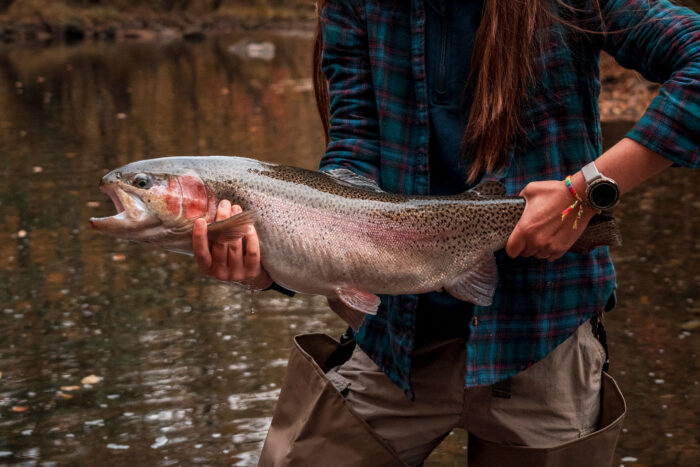
Trophy Fish Citation
If your fish doesn’t qualify as a state record, you might still be able to get a trophy citation for your catch. Unlike state records, trophy citations are based solely on whether your catch exceeds the length threshold for each game fish. For more information, check page 32 in the Fishing Regulations Summary.
To apply for a citation, complete the Trophy Fish Citation Application. A third party must witness the catch, sign the form and confirm the length. Submit the form to the following address:
Wildlife Resources Section
West Virginia Division of Natural Resources
112 California Avenue
Charleston, WV 25305

